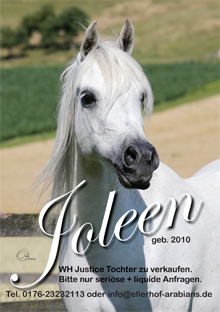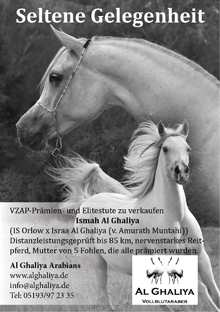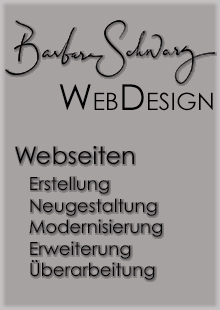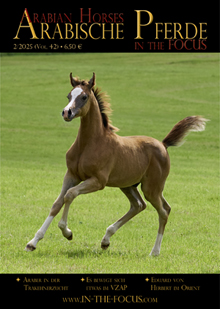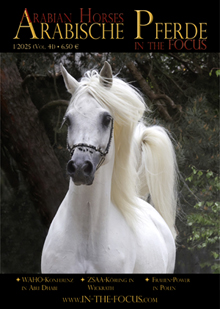-opinion post-
A judge resigns from her position because the “show scene” is corrupt and receives applause from a frustrated breedership for her move. How could this happen? The problem is home-grown, and ECAHO is responsible for the decline of the show scene in Europe.
If we want to look at how the show scene got to where it is today, then we have to look at the institution “ECAHO” (European Conference of Arab Horse Organisations), because this institution is responsible for the rules used at ECAHO shows and the judges’ training.
The ECAHO is an association whose members are the Arabian breeding associations of European and non-European countries, i.e. Registries and Breeders Associations (and whatever they are called) are voting members of this organization. These members send delegates to the Annual General Meeting (AGM) and to the relevant specialist commissions (show commission, sport commission, studbook commission), who are entitled to exercise the right to vote or to elect someone in the spirit of their association.
Structural problems
And this is where the problem begins, because it is (of course) up to each member association to decide through whom it is exercising its membership rights and how it appoints, elects or determines its delegates. Just ask your breedng association, how they select the respective delegate? You will find out that very few have a proper regulation for this in place. Rather, the board may take someone who offers himself and, if possible, also pays the travel expenses himself – because this person is then free of charge for the association – and after all everyone has to save money!
Now, of course, there are people who are selfless, who want to do something for the association or the Arabian horse, and who want to steer things in the right direction. This group of people is not the focus here. It is about those who associate a certain self-interest with such a commitment. This can range from relatively harmless “networking”, i.e. networking with other “important” people from the scene, to asserting one’s own interests. But how can the latter happen at all? Quite simply: on the one hand, very few breed associations instruct their delegates exactly how to vote for each item on the agenda, on the other hand, it is hardly possible for these associations to determine afterwards who voted yes or no, because only the summary results are recorded in the minutes. Of course, this applies in particular to elections (e.g. for the President, Executive Committee), because elections are usually “secret”, i.e. with ballot papers.
So there is a structural problem within ECAHO, since the member associations have no way of checking whether a delegate has voted in the interest of his “home association” or according to the instructions given to him.
Conflicts of interest
The Members (associations) not only determine who represents them at the Annual General Meeting (i.e. their delegates), but they also determine their representatives in the commissions. The delegates at the Annual General Meeting elect the members of the Executive Committee (board). As soon as someone is a member of the Executive Committee, he no longer represents the interests of their “home association”, but those of ECAHO as a whole – so the theory goes.
In this overall construct, one can distinguish between two types of conflicts of interest, internal and external conflicts of interest, which will be explained in more detail here:
Internal conflicts of interest are happening within the organizational structure of ECAHO and affect the delegates, the members of the commissions and the board. These groups of people are often judges, DC, show organizers or board members of their associations themselves, so they wear several hats in different positions.
Reality shows that it is not so easy to wear two or three different hats and to do justice to them all: if one and the same delegate represents his home association and the interests of the breeders of his country in the Annual General Meeting and in the commission, then he cannot, in my opinion, be a board member and represent the interests of ECAHO as an organization at the same time, because these two “parties” can have very conflicting interests! Or vice versa: A board member should not be allowed to be a delegate of an association at the same time – this represents a conflict of interest and thus another structural problem within ECAHO.
If you now take a closer look at the members of the board (Table 1, page 35), or at those of the show commission, you will find that many of them are either judges, DC or show organizers. On the one hand, this is logical because they bring the necessary know-how with them, on the other hand it is also problematic because they (may) have a conflict of interest.
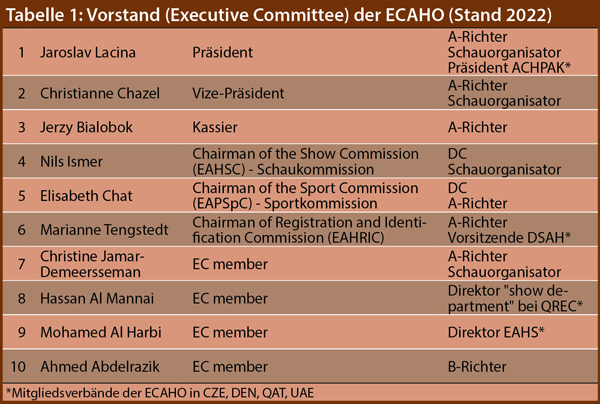
Three examples shall clarify this form of internal conflict of interest: When the show commission is concerned with the question of whether sponsorship money for shows may only come from outside the Arabian horse scene (i.e. not from stud farms, as is currently the case in many cases), to minimize the influence from such sponsors, then some of the show organizers have a conflict of interest, because very few large shows (B, A, title shows) can do without sponsoring studs (mostly from the Arab world).
Another example: The show commission is also responsible for the question of whether the number of shows a judge can judge per year should be limited so that more judges have their “turn” and to avoid that a handful of judges are dominating the shows. A little arithmetic example: In 2019 (i.e. before Corona) 160 shows were registered and at the same time 96 judges were on the A and B judges lists – that would result in an average of 5 shows per judge. If the question of how many shows a judge may judge per year can be decided by the judges themselves (who usually judge a large number of shows), then the currently valid regulation is the result: A judge may judge up to 15 ECAHO shows per year while the mathematically meaningful 5 or 6 shows might be more sensible. Oh yes, and he may judge any number of other non-ECAHO shows, such as the Dubai International Arabian Horse Championship, the show with the highest prize-money, but not governed by ECAHO, or the AHO (Arabian Horse Organization) shows, which are also mainly active in the Middle East.
Third example: The payment of the judges, DC’s and ringmasters at these shows is also decided by the show commission – and thus, among other things, by those affected themselves: There are rates of at least 200 € per day at title shows, but there is no upwards limit (see BB2022, RCS § 10)! Therefore, there are shows in the Arab countries that are well above this daily rate, and that is also a reason for some judges (or DCs, or ringmasters) to go there. Oh yes, and “material gifts” are always allowed (see BB2022, RCS §10). There are said to be people who sell their “material gifts” (mostly watches, a popular gift in the rich Gulf countries) while they are still in the country, not least for fear that they will otherwise be caught by customs! All these regulations – and many others – were decided by the actors themselves.
Here, too, there is a structural problem within ECAHO, as commission members decide on rules that may affect their own personal interests.
More conflicts of interest
External conflicts of interest take place between ECAHO “officials” (usually judges, DCs, ring stewards) and outsiders, for example between a judge and an exhibitor.
The oldest Blue Book (rule book for shows) that I was able to find dates back to 1999. In it, the topic of “conflict of interest” doesn’t even cover one page, today it’s more than twice as much – obviously hardly anything has improved as a result, which can be seen from the following example: Nayla Hayek from Switzerland, Arabian breeder since 1973 and on the ECAHO list of judges since 1989, wrote an (open) letter to ECAHO at the end of August 2022, in which she denounced the corruption within the group of judges: “What I saw and heard about many of my colleagues in these past years made me deeply disgusted,” she writes. And further: “It has nothing to do with taste or the ability to judge, it is pure corruption and it comes in different ways, be it a breeding, a holiday, or simply pure cash money they receive in exchange for favours in the show ring.” She announced her decision that she no longer wants to belong to such a group and therefore resigned from her position as a judge. She has forgotten one popular variant – selling horses at inflated prices, where the bribe is “already built in” so to speak, in order to secure the “gratitude” of the seller, who “by coincidence” is also a judge. Current conflict of interest rules prohibit business connections, but only for the year (365 days) prior to the show – anything earlier would probably fall under “memory gap” and a sale occurring two days after the show is likely “pure coincidence”.
Anyone who carefully reads the show rules (“Rules for Conduct of Shows”) covering the part about conflict of interest (§ 11 – 14) can only guess what has already been revealed or suspected. But that is also where the problem lies: It is almost impossible for the DCs, but also for a private person (exhibitor) to obtain evidence that can be used in court for such wheeling and dealings, because no one – not even ECAHO – has the power to gain insight into the business, accounts, etc. from private individuals and especially not across borders! Data protection does the rest, because it is not even possible for a private individual to find out the owner of a horse from the breeding association if the horse owner does not give its consent (beforehand) and of course change of ownership are not visible online in the stud book database either (if such database exists at all).
Cultural differences
It’s no secret that there are cultural differences between the Orient and the Occident. In Europe we are used to paying the price that a product is labelled with. In the Orient it is a “suggestion” as a “basis for haggling”. In Europe, tipping is usually given as a “thank you for a job well done” after receiving a service from a waitress or taxi driver. In the Orient it is customary to speed up administrative processes or receive a special favour by giving baksheesh before receiving the service. The list could be extended and in a certain way these differences are what make other cultures so appealing.
ECAHO was founded (among other things) to guarantee a “level playing field” (equal opportunities) for everyone. Due to the different interests of the breeders in the Orient and those in Europe, this has become so difficult that a compromise can hardly represent a satisfactory solution for both sides. So, one side is trying to get representatives of the other interest group on their side – which brings us to lobbying and corruption.
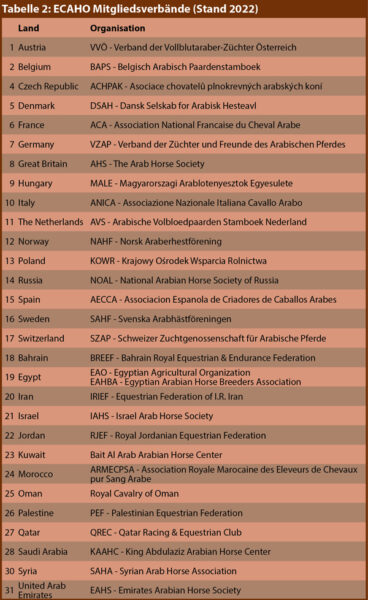
From lobbying to corruption
There has been a lot of media and TV coverage lately about Qatar and how this small country managed to get the 2022 World Cup. A pattern becomes clear that should not be unknown to those who have to do with Arabian horse shows. For example, there is talk of FIFA officials being bribed, of accepting benefits, of invitations and paid stays in luxury hotels, of expensive gifts and much more. All of this followed a “master plan” to gain influence over FIFA.
If you now replace FIFA with ECAHO, what could this “master plan” look like? Let’s take a look at ECAHO’s history: The first plans to found ECAHO date back to 1983, and the legal framework for this was created in 1987 – at that time ECAHO was still purely “European”. That was soon to change, and 10 years later 8 Arab countries were already accepted as “associate members” (with voting rights only in the Commissions), which were opposed by 17 European countries (with full voting rights). Today, there are 17 European countries versus 14 non-European countries, all of which have full voting rights – so the influence of “outside Europe” has increased drastically and it is always only 1-2 votes that tip the scales. This is problematic because the financial resources of both the associations and the individual breeders and thus the overall interests in these two geographical areas are completely different.
Now one shouldn’t just look for responsibility on one side – it was rather the greed of the European associations and show organizers to receive sponsorship money that paved the way, because where baksheesh is only offered but nobody responds to it, such efforts run in the (Desert) sands. There are always two involved – those who give and those who take!
Let’s be honest: without the sponsorship money from the Middle East there would have been no title show on European soil for a long time, no A show either, and our B shows would take place “on the green field” again. However, it should be obvious that conditions – or rather, expectations – are attached to this money, because the advertising effectiveness of banners and posters, which officially compensate for the sponsorship, is really negligible. And now you can also imagine what the expectations are: It’s about the composition of the judges’ panel – and with that the circle closes (see chapter “External conflicts of interest”).
The master plan
Let’s go back to the master plan. There is no question that the Arabian horse originally had its homeland in the Arabian region. I can therefore understand the aspirations of the Arab countries, who say that they want to have the authority to determine the fate of this breed, to get the “stud book of origin”, so to speak, as it is the case with other breeds, but here, not only in terms of “breeding”, but also in terms of “shows”.
On the other side, there are historical facts: Both the WAHO and the ECAHO are “Western” foundations, at a time when the Arab countries had not yet rediscovered their native horse breed. Also, one should not forget that the oriental countries have joined these organizations voluntarily. I still remember that in the 1990s it was discussed that instead of admitting the Arab countries to the ECAHO, they should found their own “ACAHO”. And this is still the best solution for me today. There is an attempt by the Arab countries to set up their own organization, the AHO (Arabian Horse Organization), which only had two shows in Saudi Arabia in 2022. But instead of continuing along this path of the two separate organizations for two geographical areas – preferably with bilateral connections – efforts are currently being made to rename the ECAHO to ICAHO (International Conference…), since one would probably like to expand further. Of course, this also means that the President and the majority of the Board of Directors may also come from non-European countries in the future, which has so far – for historical reasons – been prevented by the ECAHO constitution. The master plan would then work out – “mission accomplished”.
Gudrun Waiditschka








